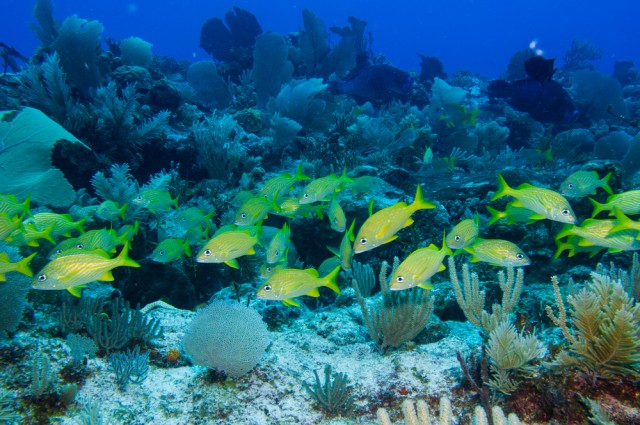Just a few months after the U.S. and Cuba restored diplomatic ties, conservation is already seeing the benefits that increased cooperation can bring. This week saw the National Oceanic and Atmospheric Administration (NOAA) sign an agreement that will bring two U.S. marine sanctuaries into a cooperative management with two of Cuba’s most important marine reserves. It will allow both countries to share technical and scientific data, as well as promote educational and outreach programs.
“We recognize we all share the same ocean and face the same challenges of understanding, managing, and conserving critical marine resources for future generations,” explains Dr. Kathryn Sullivan, the NOAA administrator who signed the agreement in Cuba earlier this week. “The opportunity for international cooperation in marine conservation is invaluable and this moves us closer to ensuring a healthy and productive ocean for everyone.”
The memorandum will allow scientists from the U.S. Flower Garden Banks National Marine Sanctuary, which is just off the coast of Texas, and the Florida Keys sanctuary to work with their Cuban counterparts at the Guanahacabibes National Park and the offshore reef Banco de San Antonio. Separated by only around 100 kilometers (62 miles) of water, all four reserves share similar ecosystems, although those in Cuban waters are much healthier. This means they also share many fish and coral species, so any expertise or data on the resident plants and animals can be shared.
Cuba’s marine environment is considered by many as one of the best preserved coral ecosystems in the world, as it has retained many of its large reefs and is still populated by large numbers of fish, sharks and marine turtles. Despite its pristine state, the reefs share many of the same threats as those experienced by the U.S. ecosystems, such as an increase in unregulated tourism and oil exploration in the Gulf of Mexico.
This news comes after an earlier announcement that the two nations will also be collaborating on shark conservation, as scientists estimate that around 20 percent of the world’s 500 species of shark can be found within the waters between the two countries. While populations of the animals around the world have crashed, Cuba is often seen as a biodiversity epicenter for sharks that are thriving.
“Cooperation among protected area managers of Cuba and U.S. national park and marine sanctuaries is a great way to preserve our shared natural heritage of the wider Caribbean and Gulf of Mexico regions,” says National Park Service Director Jonathan Jarvis. “After all, fish, marine mammals, sea turtles, birds and other marine life exist in ecosystems that rarely fall within maps drawn by man.”
Source: IFL, Full Article


